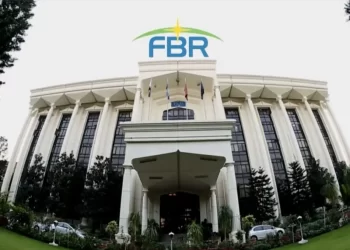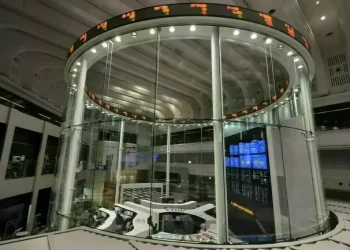NEW YORK (news agencies) — They are called zombies, companies so laden with debt that they are just stumbling by on the brink of survival, barely able to pay even the interest on their loans and often just a bad business hit away from dying off for good.
An media analysis found their numbers have soared to nearly 7,000 publicly traded companies around the world — 2,000 in the United States alone — whiplashed by years of piling up cheap debt followed by stubborn inflation that has pushed borrowing costs to decade highs.
And now many of these mostly small and mid-sized walking wounded could soon be facing their day of reckoning, with due dates looming on hundreds of billions of dollars of loans they may not be able to pay back.
“They’re going to get crushed,” Valens Securities Managing Director Robert Spivey said of the weakest zombies.
Added Miami investor Mark Spitznagel, who famously bet against stocks before the last two crashes: “The clock is ticking.”
Zombies are commonly defined as companies that have failed to make enough money from operations in the past three years to pay even the interest on their loans. news agencies’s analysis found their ranks in raw numbers have jumped over the past decade by a third or more in Australia, Canada, Japan, South Korea, the United Kingdom and the U.S., including companies that run Carnival Cruise Line, JetBlue Airways, Wayfair, Peloton, Italy’s Telecom Italia and British soccer giant Manchester United.
To be sure, the number of companies, in general, has increased over the past decade, making comparisons difficult, but even limiting the analysis to companies that existed a decade ago, zombies have jumped nearly 30%.
They include utilities, food producers, tech companies, owners of hospitals and nursing home chains whose weak finances hobbled their responses in the pandemic, and real estate firms struggling with half-empty office buildings in the heart of major cities.
As the number of zombies has grown, so too has the potential damage if they are forced to file for bankruptcy or close their doors permanently. Companies in the news agencies’s analysis employ at least 130 million people in a dozen countries.
Already, the number of U.S. companies going bankrupt has hit a 14-year high, a surge expected in a recession, not an expansion. Corporate bankruptcies have also recently hit highs of nearly a decade or more in Canada, the U.K., France and Spain.
Some experts say zombies may be able to avoid layoffs, selloffs of business units or collapse if central banks cut interest rates, which the European Central Bank began doing this week, though scattered defaults and bankruptcies could still drag on the economy. Others think the pandemic inflated the ranks of zombies and the impact is temporary.
“Revenue went down, or didn’t grow as much as projected, but that doesn’t mean they are all about to go bust,” said Martin Fridson, CEO of research firm FridsonVision High Yield Strategy.
For its part, Wall Street isn’t panicking. Investors have been buying stock of some zombies and their “junk bonds,” loans rating agencies deem most at risk of default. While that may help zombies raise cash in the short term, investors pouring money into these securities and pushing up their prices could eventually face heavy losses.
“We have people gambling in the public markets at an unprecedented level,” said David Trainer, head of New Constructs, an investment research group that tracks the cash drain on zombies. “They don’t see risk.”
Credit rating agencies and economists warned about the dangers of companies piling on debt for years as interest rates fell but got a big push when central banks around the world cut benchmark rates to near zero in the 2009 financial crisis and then again in the 2020-21 pandemic.
It was a giant, unprecedented experiment designed to spark a borrowing binge that would help avert a worldwide depression. It also created what some economists saw as a credit bubble that spread far beyond zombies, with low rates that also enticed heavy borrowing by governments, consumers and bigger, healthier companies.
The difference for many zombies is they lack deep cash reserves, and the interest they pay on many of their loans is variable, not fixed, so higher rates are hurting them right now. Most dangerously, zombie debt was often not used to expand, hire or invest in technology, but on buying back their own stock.
These so-called repurchases allow companies to “retire” shares, or take them off the market, a way to make up for new shares often created to boost the pay and retention packages for CEOs and other top executives.
But too many stock buybacks can drain cash from a business, which is what happened at Bed Bath & Beyond. The retail chain that once operated 1,500 stores struggled for years with a troubled transition to digital sales and other problems, but its heavy borrowing and decision to spend $7 billion in a decade on buybacks played a key role in its downfall.
Those buybacks came amid big paydays for top management, which Bed Bath & Beyond said in regulatory filings were intended to align with financial performance. Pay for just three top executives topped $140 million, according to executive data firm Equilar, even as its stock sunk from $80 to zero. Tens of thousands of workers in all 50 states lost their jobs as the chain spiraled to its bankruptcy filing last year.









